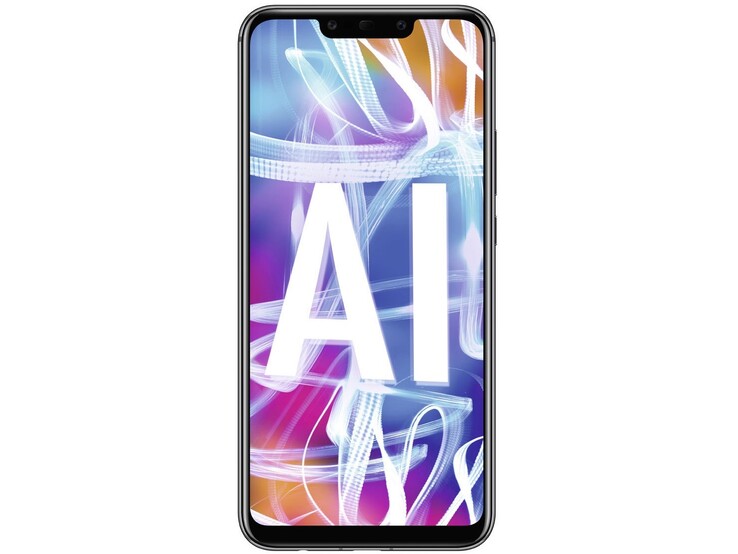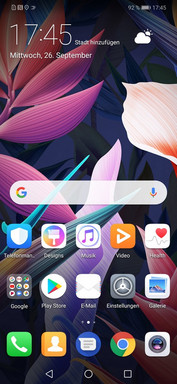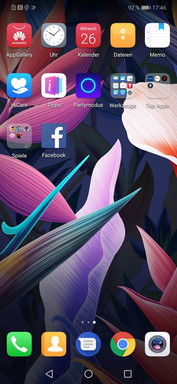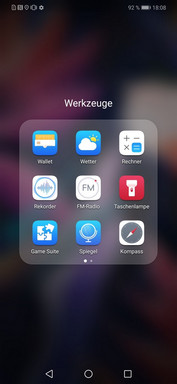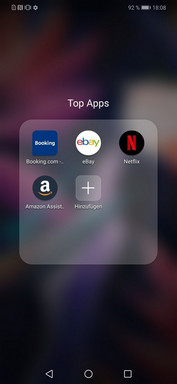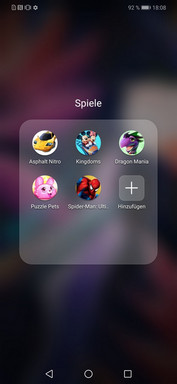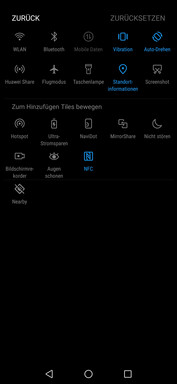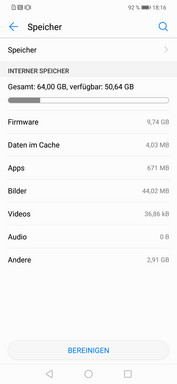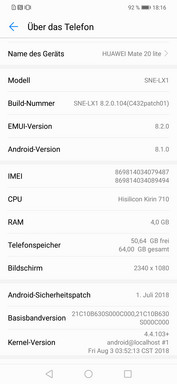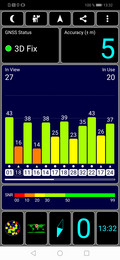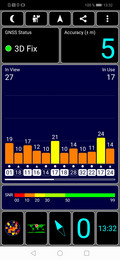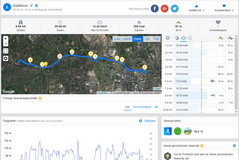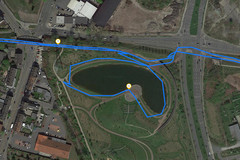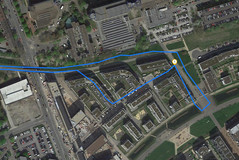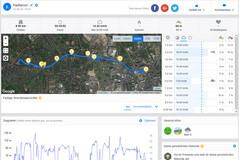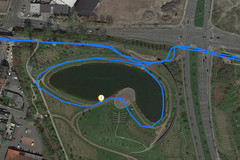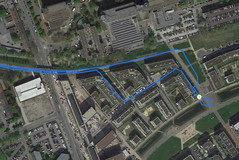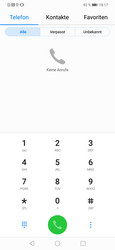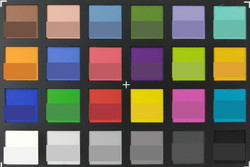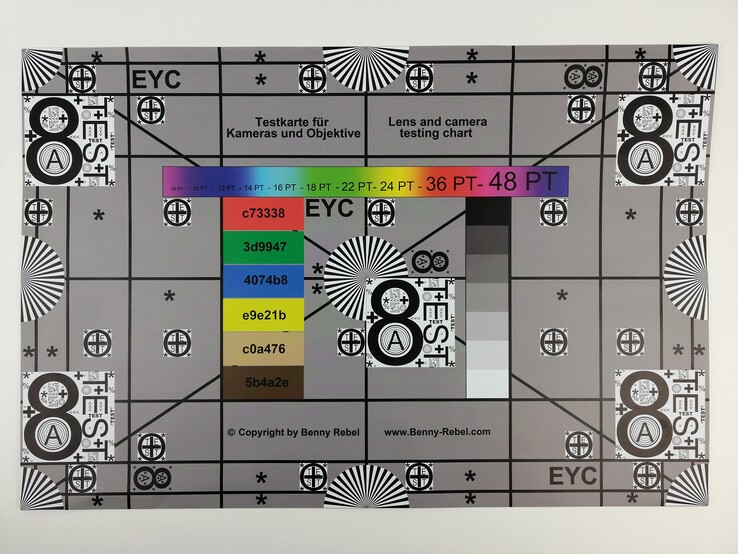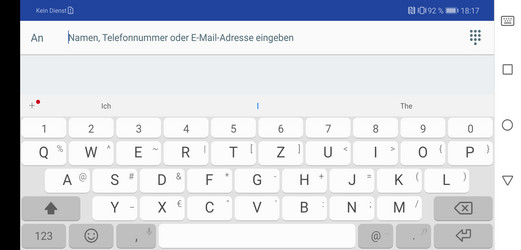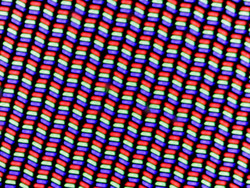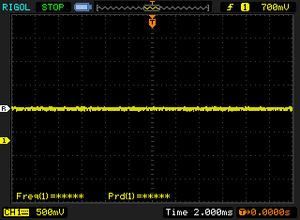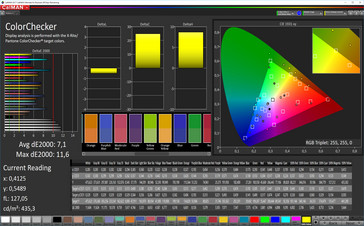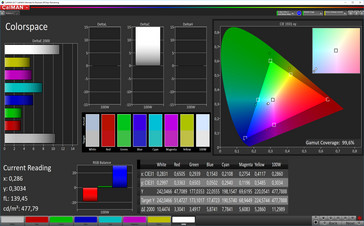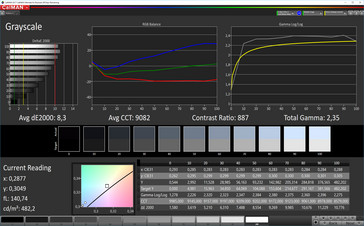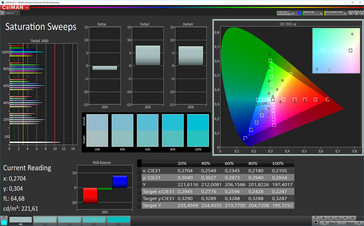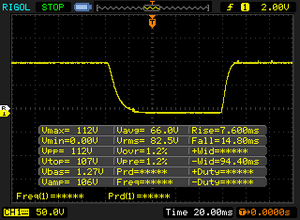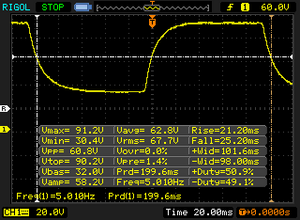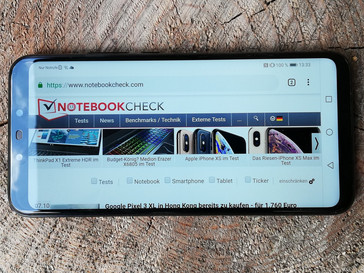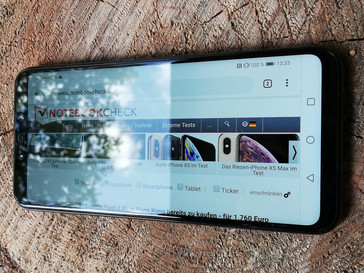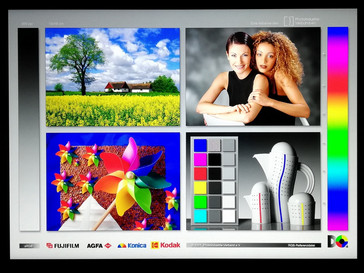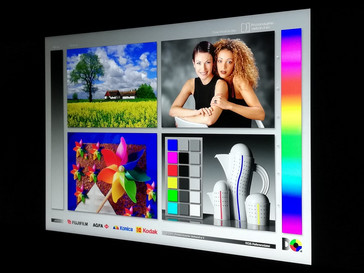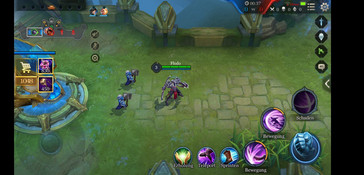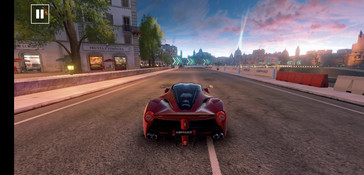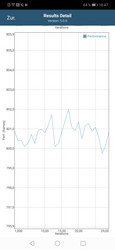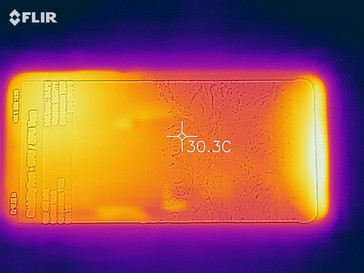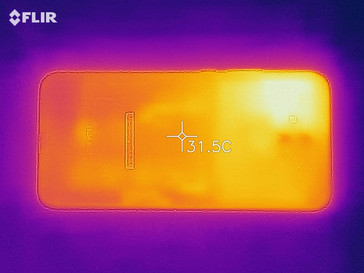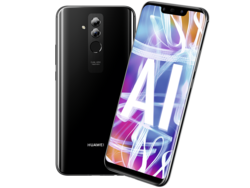Huawei Mate 20 Lite Smartphone Review
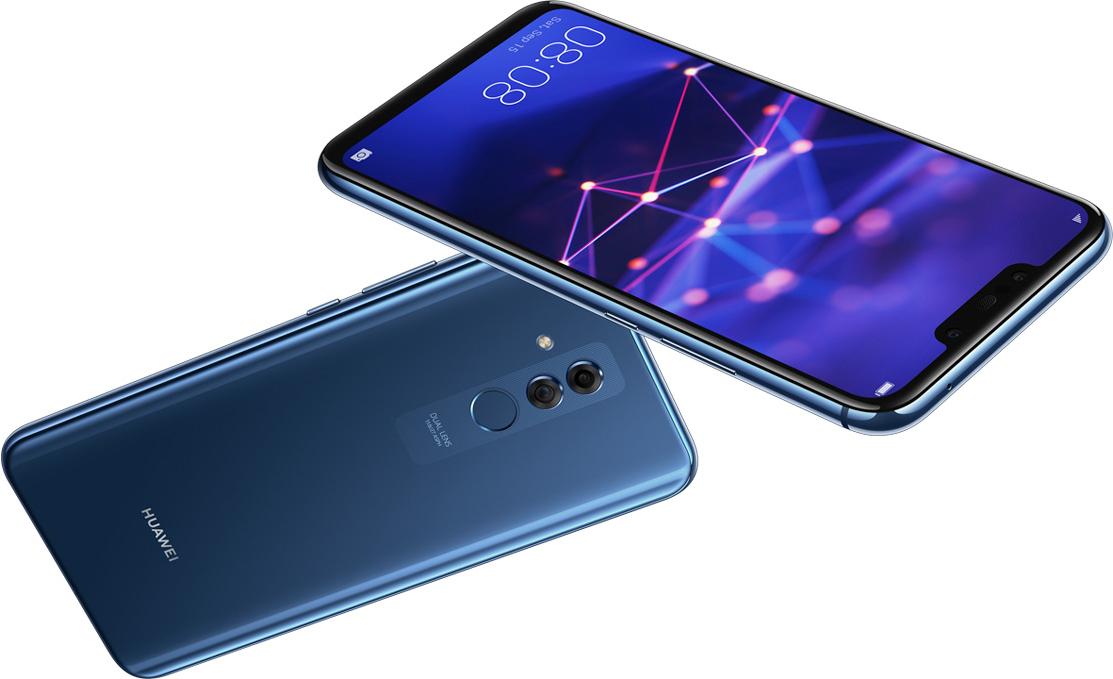
The Huawei Mate 20 Lite, the focus of this review, is the first model in the much speculated about Mate 20 series. Huawei has yet to unveil any other Mate 20 devices officially, but there have been numerous leaks and sightings, something which we have covered separately. The Mate 20 Lite directly succeeds the popular Mate 10 Lite and offers some improvements that were missing from last year’s model.
The new model includes NFC and ac Wi-Fi along with the compulsory CPU and GPU upgrades. The new HiSilicon Kirin 710 SoC powers the Mate 20 Lite and integrates an ARM Mali-G51 MP4 GPU among other components. Huawei complements its new SoC with 4 GB of RAM and 64 GB of eMMC flash storage.
The Mate 20 Lite costs €400 (~$462) at launch, a price bracket for which there is plenty of competition. We have chosen to compare our test device against the ASUS ZenFone 5, the BQ Aquaris X2 Pro, the Nokia 7 Plus and the Sony Xperia XA2 Plus.
Case
The Mate 20 Lite has a metal case with a glass back and comes in a choice of black, blue or gold for the German market. Huawei has placed the device’s two hardware buttons on the right-hand side of the case; both sit firmly within the case on our test device. Moreover, the transitions materials on our test device are clean and even.
The Mate 20 Lite is one of the heavier smartphones of its class, with our test device weighing 172 g (~6.1 oz). The device is noticeably tall too at 158.3 mm (~6.2 in) , putting it on par with the Nokia 7 Plus. While the Mate 20 Lite is a relatively large device, Huawei has squeezed in a 6.3-inch 19.5:9 aspect ratio display compared to the Nokia 7 Plus’ 6-inch display. Our test device is easy to hold though, despite its large footprint.
Connectivity
The brand-new HiSilicon Kirin 710 SoC powers the Mate 20 Lite and integrates an ARM Mali-G51 MP4 GPU. Huawei has also equipped the device with 4 GB of RAM and 64 GB of eMMC flash storage, the latter of which can be expanded with up to 256 GB microSD cards. The Mate 20 Lite is a Dual-SIM device too, but there is only room for two nano-SIMs or a single SIM card and a microSD card.
The device also has a fingerprint sensor, NFC, Bluetooth 4.2 support and a USB Type-C port. Huawei has included only a USB 2.0 connection, but the Mate 20 Lite supports USB On-The-Go (OTG) nonetheless for connecting the device to peripherals. There is even a 3.5 mm jack too.
Software
The Mate 20 Lite ships with EMUI 8.2, a Huawei customized version of Android Oreo 8.1. EMUI offers a stock Android akin experience but with different icons and Huawei specific apps. The Settings menu is also structured differently, but it should be clear enough for EMUI newcomers. Our test device has Android security patch level 1 July 2018 installed, which is several months behind the patch level at the time of writing.
Our test device also has plenty of pre-installed apps such as Huawei’s suite of apps, which includes a File Manager and Data backup software. There are also apps by Amazon, Facebook and a few games among others. Fortunately, Huawei allows users to uninstall these apps from within the Settings menu. The Mate 20 Lite supports multiple user accounts too.
Communication & GPS
The Mate 20 Lite supports GSM, 3G and LTE Cat. 12, which allows for up to 600 Mbps download and 100 Mbps upload speeds over LTE. The device also has Bluetooth 4.2 and ac Wi-Fi connectivity, although Wi-Fi performance is between nineteen and 64% slower than that of our comparison devices.
The Mate 20 Lite uses GPS and GLONASS for location services, with BeiDou reserved for Asian market variants. The GPS Test demonstrates that our test device achieves a location accuracy of up to 5 m (~16 ft) when indoors or outdoors.
We also took our test device on our compulsory bike ride to compare its location accuracy against a professional navigation device, the Garmin Edge 500. Our test device achieved mixed results. On the one hand, our test device deviated by only 60 m (~197 ft) compared to the total distance that the Garmin recorded. However, taking a closer look at the routes plotted reveals that our test device struggled to plot us accurately through corners and even on straight stretches of road. Moreover, our test device frequently displayed us next to the road on which we were cycling. In short, we would recommend using the Mate 20 Lite only for simple navigation tasks.
Phone Features & Call Quality
Launching the Phone app on our test device automatically brings up the keypad. The app is structured by tabs, with three options for “Phone”, “Contacts” and “Favorites” at the top of the app, while your call history is divided into “All”, “Missed” and “Unknown”.
Our test device has good call quality with voices reproduced clearly but lacking in deeper tones. The earpiece gets loud enough to make calls even on a busy street; our test device reliably filters out ambient noise too.
The included headphones are a good alternative for making calls, with both sides of the call sounding clear. The headphones also have a higher maximum volume than the earpiece, which is useful if you are struggling to hear your call partner when calling them from a noisy environment.
Cameras
The Mate 20 Lite has two sets of dual-cameras. Huawei has opted for a 24 MP and 2 MP pairing on the front with 20 MP and 2 MP sensors on the rear. The two smaller sensors support the larger sensors with depth of field information and cannot be used independently. Moreover, the 20 MP rear-facing sensor has a wider aperture than the 24 MP rear-facing sensor at f/1.8 and f/2.0 respectively. Both cameras should take good photos in low-light conditions, but the rear-facing sensor’s wider aperture will allow it to capture more light than its front-facing counterpart.
The front-facing camera takes excellent portrait photos with the object in focus captured sharply and in detail. Fine structures are preserved too. By contrast, background objects are blurry, although the fixed focus lens can focus on faces or objects in the distance should you need to. Huawei also incorporates AI games and lighting effects into its camera app, but the customization options for the front-facing camera are limited; for example, the “professional” mode only works with the rear-facing camera.
The 20 MP rear-facing camera supports Phase Detection Autofocus (PDAF) and Contrast Detection Autofocus (CDAF), which combine to take impressive panoramic photos. The camera handles different light conditions well; light and dark areas within the same shot are uniformly reproduced too. However, objects lack separation when looking at photos in detail, while surfaces at a greater distance from the camera tend to look muddy. Objects captured at close range are detailed and look sharp though. Additionally, the colors in macro shots look vibrant, and objects are separated well. With that said, objects outside of the main sensor’s focus area look blurry and are dominated by image noise.
Our test device performs well in low-light conditions, with the main camera able to capture objects clearly with a good level of detail. Photos are affected by image noise, but to a lesser extent than many competitors. Using the “professional” mode can help mitigate image noise with its ISO, white balance, and exposure options among other features.
The “professional” mode can also be used with video recordings, but there are only options for ambient light, autofocus and white balance. The image stabilization works well though, and compensates for even the strongest of shaking. Video quality is on par with our test shots.
We also subjected our test device to photo tests under controlled lighting conditions and assessed the results With ColorChecker Passport. Overall, our test device tends to reproduce colors too lightly compared to reference colors and darker tones too darkly.
The Mate 20 Lite reproduces our test chart well with fine details and structures remaining visible even at the edges of the picture. Colors look comparatively strong too, although the bottom right-hand corner of the image looks paler than the rest of the shot. Our other test shots did not replicate this same paleness though.
Accessories & Warranty
Our test device comes with a USB charger, a matching USB Type-A to Type-C cable, a pair of headphones and a screen protector. Huawei also offers other general accessories on their website such as Bluetooth headphones, selfie stick and portable chargers.
The Mate 20 Lite comes with a twenty-four month manufacturer’s warranty. Please see our Guarantees, Return policies and Warranties FAQ for country-specific information.
Input Devices & Operation
Our test device has SwiftKey installed as its default keyboard app, which is easy to use and has various settings for key sizes, layout and themes among others. The touchscreen responds accurately and quickly to inputs, while the display finish is smooth enough for drag and drop movements even after a prolonged period of using the device.
The positional sensor works well too, and adjusts the display’s orientation with only a slight delay. Regarding security, the Mate 20 Lite supports Android’s typical pattern and PIN authentication methods along with biometric security via a fingerprint sensor. The sensor in our test device reacts quickly and recognizes stored fingerprints even if they are optimally placed on the reader.
Display
The Mate 20 Lite has a 6.3-inch IPS display that runs at a native 2,340x1,080 resolution with a 19.5:9 aspect ratio and a pixel density of 409 PPI. Our test device achieves an average maximum brightness of 460 cd/m² according to X-Rite i1Pro 2 and a maximum brightness of 453 cd/m² at the center of the display. These values place the Mate 20 Lite second bottom in our comparison table and only marginally ahead of the Mate 10 Lite. Our test device has an 89% uniformly lit display too, which again is below most of our comparison devices, albeit by a smaller margin than in terms of maximum luminosity.
| |||||||||||||||||||||||||
Brightness Distribution: 89 %
Center on Battery: 453 cd/m²
Contrast: 871:1 (Black: 0.52 cd/m²)
ΔE ColorChecker Calman: 7.1 | ∀{0.5-29.43 Ø4.77}
ΔE Greyscale Calman: 8.3 | ∀{0.09-98 Ø5}
99.6% sRGB (Calman 2D)
Gamma: 2.35
CCT: 9082 K
| Huawei Mate 20 Lite IPS, 2340x1080, 6.3" | Sony Xperia XA2 Plus IPS, 2160x1080, 6" | BQ Aquaris X2 Pro LTPS, 2160x1080, 5.7" | Asus Zenfone 5 ZE620KL IPS, 2246x1080, 6.2" | Huawei Mate 10 Lite IPS, 2160x1080, 5.9" | Nokia 7 Plus IPS, 2160x1080, 6" | |
|---|---|---|---|---|---|---|
| Screen | 49% | 29% | 26% | 26% | 41% | |
| Brightness middle (cd/m²) | 453 | 597 32% | 675 49% | 595 31% | 467 3% | 458 1% |
| Brightness (cd/m²) | 460 | 592 29% | 650 41% | 561 22% | 457 -1% | 463 1% |
| Brightness Distribution (%) | 89 | 92 3% | 92 3% | 87 -2% | 89 0% | 92 3% |
| Black Level * (cd/m²) | 0.52 | 0.32 38% | 0.46 12% | 0.54 -4% | 0.3 42% | 0.22 58% |
| Contrast (:1) | 871 | 1866 114% | 1467 68% | 1102 27% | 1557 79% | 2082 139% |
| Colorchecker dE 2000 * | 7.1 | 2.4 66% | 5.9 17% | 4.2 41% | 5 30% | 4 44% |
| Colorchecker dE 2000 max. * | 11.6 | 5.3 54% | 9.5 18% | 6 48% | 8.2 29% | 7.4 36% |
| Greyscale dE 2000 * | 8.3 | 3.4 59% | 6.6 20% | 4.7 43% | 6.1 27% | 4.7 43% |
| Gamma | 2.35 94% | 2.2 100% | 2.36 93% | 2.12 104% | 2.15 102% | 2.19 100% |
| CCT | 9082 72% | 7172 91% | 7846 83% | 7577 86% | 7961 82% | 7425 88% |
* ... smaller is better
Screen Flickering / PWM (Pulse-Width Modulation)
| Screen flickering / PWM not detected | |||
In comparison: 53 % of all tested devices do not use PWM to dim the display. If PWM was detected, an average of 8084 (minimum: 5 - maximum: 343500) Hz was measured. | |||
The Mate 20 Lite has a below-average contrast ratio too. We measured an 871:1 contrast ratio during our tests, which is considerably lower than the contrast ratios of our comparison devices. Our test device’s comparatively high 0.52 cd/m² black value is partially to blame here as is the display’s relatively low maximum luminosity. In daily use, colors will look muddier than on our comparison devices, while blacks will have a gray haze to them.
What is more, our test device has a noticeable blue tint with the display set to the default color mode. Fortunately, EMUI 8.2 includes a freely adjustable color temperature scale, allowing you to give the display a warmer color temperature to compensate for any blue casts.
Display Response Times
| ↔ Response Time Black to White | ||
|---|---|---|
| 22.4 ms ... rise ↗ and fall ↘ combined | ↗ 7.6 ms rise | |
| ↘ 14.8 ms fall | ||
| The screen shows good response rates in our tests, but may be too slow for competitive gamers. In comparison, all tested devices range from 0.1 (minimum) to 240 (maximum) ms. » 49 % of all devices are better. This means that the measured response time is worse than the average of all tested devices (20.2 ms). | ||
| ↔ Response Time 50% Grey to 80% Grey | ||
| 26.4 ms ... rise ↗ and fall ↘ combined | ↗ 21.2 ms rise | |
| ↘ 25.2 ms fall | ||
| The screen shows relatively slow response rates in our tests and may be too slow for gamers. In comparison, all tested devices range from 0.165 (minimum) to 636 (maximum) ms. » 35 % of all devices are better. This means that the measured response time is better than the average of all tested devices (31.6 ms). | ||
Our test device is usable outdoors despite its relatively low display brightness. Content is easily readable on cloudy days, but reflections make the display increasingly difficult to read in direct sunlight.
Performance
The brand new HiSilicon Kirin 710 SoC powers the Mate 20 Lite and integrates an ARM Mali-G51 MP4 GPU for graphics. These components are complemented by 4 GB of RAM for smooth system performance and 64 GB of eMMC flash memory for plenty of storage. In short, the Mate 20 Lite is powerful enough for many applications, with its Kirin 710 SoC around thirty percent faster than the MediaTek Helio P23 MT6763T and ten percent slower than the Qualcomm Snapdragon 845. The main advantage that the Kirin 710 SoC has over the Kirin 970 SoC is its more modern manufacturing process, which should make the Kirin 710 more energy efficient than its predecessor.
Our test device often ranks near the top of our comparison table in system performance benchmarks, but falls somewhat short of our comparison devices in GPU benchmarks. Please note: Our 3DMark results for the Mate 20 Lite are inaccurate. We downloaded the app from the Google Play Store, but our test device failed to recognize that we were running a benchmark. As a result, the benchmark scores varied by up to 50%. We have included these abnormalities in our benchmark results.
| AnTuTu v6 - Total Score (sort by value) | |
| Huawei Mate 20 Lite | |
| Sony Xperia XA2 Plus | |
| BQ Aquaris X2 Pro | |
| Asus Zenfone 5 ZE620KL | |
| Huawei Mate 10 Lite | |
| Nokia 7 Plus | |
| Average HiSilicon Kirin 710 (104012 - 112870, n=8) | |
| AnTuTu v7 - Total Score (sort by value) | |
| Huawei Mate 20 Lite | |
| Sony Xperia XA2 Plus | |
| BQ Aquaris X2 Pro | |
| Asus Zenfone 5 ZE620KL | |
| Nokia 7 Plus | |
| Average HiSilicon Kirin 710 (124870 - 183420, n=10) | |
| Lightmark - 1920x1080 1080p (sort by value) | |
| Nokia 7 Plus | |
| Basemark ES 3.1 / Metal - offscreen Overall Score (sort by value) | |
| Huawei Mate 20 Lite | |
| Nokia 7 Plus | |
| Average HiSilicon Kirin 710 (431 - 431, n=2) | |
| Average of class Smartphone (205 - 7731, n=34, last 2 years) | |
The Mate 20 Lite scored solidly in browser benchmarks, finishing mid-table in our comparison table. In daily use web browsing on our test device is smooth with websites loading quickly and media content following shortly afterwards.
| JetStream 1.1 - Total Score | |
| Nokia 7 Plus (Chrome 60) | |
| Asus Zenfone 5 ZE620KL (Chrome 67) | |
| Average HiSilicon Kirin 710 (47 - 55.1, n=10) | |
| BQ Aquaris X2 Pro (Chrome 67) | |
| Huawei Mate 20 Lite (Chrome 69) | |
| Huawei Mate 10 Lite (Chrome 62) | |
| Sony Xperia XA2 Plus (Chrome 67) | |
| Octane V2 - Total Score | |
| Average of class Smartphone (2228 - 126661, n=194, last 2 years) | |
| Nokia 7 Plus (Chrome 60) | |
| Asus Zenfone 5 ZE620KL (Chrome 67) | |
| Average HiSilicon Kirin 710 (9041 - 10544, n=13) | |
| BQ Aquaris X2 Pro (Chrome 67) | |
| Huawei Mate 20 Lite (Chrome 69) | |
| Huawei Mate 10 Lite (Chrome 62) | |
| Sony Xperia XA2 Plus (Chrome 67) | |
| Mozilla Kraken 1.1 - Total | |
| Sony Xperia XA2 Plus (Chrome 67) | |
| Huawei Mate 10 Lite (Chrome 62) | |
| Average HiSilicon Kirin 710 (3999 - 4853, n=13) | |
| Huawei Mate 20 Lite (Chrome 69) | |
| Asus Zenfone 5 ZE620KL (Chrome 67) | |
| BQ Aquaris X2 Pro (Chrome 67) | |
| Nokia 7 Plus (Chrome 60) | |
| Average of class Smartphone (257 - 28190, n=154, last 2 years) | |
| WebXPRT 2015 - Overall | |
| Nokia 7 Plus (Chrome 60) | |
| Average HiSilicon Kirin 710 (147 - 178, n=5) | |
| BQ Aquaris X2 Pro (Chrome 67) | |
| Huawei Mate 20 Lite (Chrome 69) | |
| Sony Xperia XA2 Plus (Chrome 67) | |
| Huawei Mate 10 Lite (Chrome 62) | |
* ... smaller is better
The Mate 20 Lite has 64 GB of eMMC flash storage, of which around 50 GB is available to use. Transfer speeds are fast, with our test device outscoring all our comparison devices overall in AndroBench 3-5.
The microSD card reader is less impressive though, with transfer speeds matching that of our comparison devices. Huawei has improved on the microSD card reader in the Mate 10 Lite though, with our test device achieving 48% faster write and 10% faster speeds than its predecessor.
| Huawei Mate 20 Lite | Sony Xperia XA2 Plus | BQ Aquaris X2 Pro | Asus Zenfone 5 ZE620KL | Huawei Mate 10 Lite | Nokia 7 Plus | Average 64 GB eMMC Flash | Average of class Smartphone | |
|---|---|---|---|---|---|---|---|---|
| AndroBench 3-5 | -18% | -20% | 10% | -41% | -17% | -16% | 569% | |
| Sequential Read 256KB (MB/s) | 304.3 | 281.1 -8% | 280.8 -8% | 286.6 -6% | 286.8 -6% | 283.1 -7% | 277 ? -9% | 2235 ? 634% |
| Sequential Write 256KB (MB/s) | 217.3 | 146.2 -33% | 204.8 -6% | 201.8 -7% | 99.8 -54% | 211.6 -3% | 178.4 ? -18% | 1871 ? 761% |
| Random Read 4KB (MB/s) | 78.5 | 77.4 -1% | 51.3 -35% | 71.2 -9% | 31.5 -60% | 54.7 -30% | 60.7 ? -23% | 297 ? 278% |
| Random Write 4KB (MB/s) | 48.78 | 10.5 -78% | 15.43 -68% | 83.5 71% | 15.26 -69% | 19.62 -60% | 33.8 ? -31% | 343 ? 603% |
| Sequential Read 256KB SDCard (MB/s) | 76.4 ? | 86 ? 13% | 83.3 ? 9% | 85.8 ? 12% | 69.1 ? -10% | 82.2 8% | 77.4 ? 1% | |
| Sequential Write 256KB SDCard (MB/s) | 67.8 ? | 67 ? -1% | 61.1 ? -10% | 65.2 ? -4% | 35.35 ? -48% | 62.3 -8% | 58.3 ? -14% |
Games
The Mate 20 Lite plays most games well, but will struggle with more demanding games such as “PUBG Mobile”. Our test device plays “Arena of Valor” and “Asphalt 9: Legends” smoothly at all graphics settings.
The touchscreen and positional sensor worked reliably throughout testing. Our test device accurately reproduced inputs during games, and we had no issues when testing the device with either game.
| Arena of Valor | |||
| Settings | Value | ||
| min | 30 fps | ||
| high HD | 30 fps | ||
| Asphalt 9: Legends | |||
| Settings | Value | ||
| High Quality | 30 fps | ||
| Standard / low | 31 fps | ||
Emissions
Temperature
Surface temperatures rise to no more than 37 °C (~99 °F) in daily use even under sustained load. Hence, the device never gets too hot to hold even when subjecting it to the toughest of workloads.
Our test device also handles the performance intensive GFXBench 3.1 Manhattan benchmark well. Framerates vary over a loop of 30 run-throughs as demonstrated by the included screenshot, but performance remains consistent overall. Typically, devices struggle to maintain initial framerates as internal temperatures rise.
(+) The maximum temperature on the upper side is 35.8 °C / 96 F, compared to the average of 35.2 °C / 95 F, ranging from 21.9 to 247 °C for the class Smartphone.
(+) The bottom heats up to a maximum of 36.5 °C / 98 F, compared to the average of 34 °C / 93 F
(+) In idle usage, the average temperature for the upper side is 29.9 °C / 86 F, compared to the device average of 32.9 °C / 91 F.
Speakers
The Mate 20 Lite has a single speaker on the underside of the device, with a maximum volume of 84.1 dB(A). Audio playback sounds clear, albeit with a lack of bass tones. In short, the speakers sound good enough for occasional audio playback, but we would always recommend using headphones or external speakers instead.
The included headphones sound clear too, but also fail to reproduce deep tones. The 3.5 mm jack tightly holds cables in place; we had no issues with cables slipping out during testing.
Huawei Mate 20 Lite audio analysis
(+) | speakers can play relatively loud (84.1 dB)
Bass 100 - 315 Hz
(-) | nearly no bass - on average 31.6% lower than median
(±) | linearity of bass is average (9.4% delta to prev. frequency)
Mids 400 - 2000 Hz
(±) | reduced mids - on average 6.1% lower than median
(+) | mids are linear (5.8% delta to prev. frequency)
Highs 2 - 16 kHz
(±) | higher highs - on average 8.6% higher than median
(+) | highs are linear (3.6% delta to prev. frequency)
Overall 100 - 16.000 Hz
(±) | linearity of overall sound is average (27.3% difference to median)
Compared to same class
» 70% of all tested devices in this class were better, 5% similar, 24% worse
» The best had a delta of 11%, average was 35%, worst was 134%
Compared to all devices tested
» 83% of all tested devices were better, 4% similar, 13% worse
» The best had a delta of 4%, average was 24%, worst was 134%
Sony Xperia XA2 Plus audio analysis
(+) | speakers can play relatively loud (84.7 dB)
Bass 100 - 315 Hz
(-) | nearly no bass - on average 30.7% lower than median
(±) | linearity of bass is average (10.6% delta to prev. frequency)
Mids 400 - 2000 Hz
(+) | balanced mids - only 4.8% away from median
(+) | mids are linear (5.7% delta to prev. frequency)
Highs 2 - 16 kHz
(±) | higher highs - on average 6.6% higher than median
(+) | highs are linear (2.2% delta to prev. frequency)
Overall 100 - 16.000 Hz
(±) | linearity of overall sound is average (24.5% difference to median)
Compared to same class
» 58% of all tested devices in this class were better, 7% similar, 35% worse
» The best had a delta of 11%, average was 35%, worst was 134%
Compared to all devices tested
» 74% of all tested devices were better, 6% similar, 21% worse
» The best had a delta of 4%, average was 24%, worst was 134%
Battery Life
Power Consumption
The Mate 20 Lite is a relatively inefficient device with high power consumption values than all but all one of our comparison devices. Our test device consumes a minimum of 1.01 W, which is higher than all our comparison devices except for the ASUS ZenFone 5. By contrast, we measured maximum power consumption at 6.32 W, which is beaten only by the Xperia XA2 Plus and the Mate 10 Lite. Overall though, the Mate 10 Lite is an average of 8% more energy efficient than its successor despite being powered by an older and supposedly less efficient SoC.
The Mate 20 Lite comes with an 18-W charger which supports Huawei QuickCharge and fully recharges our test device in just over two hours. The charger proved powerful enough during testing to keep charging our test device regardless of the load to which we were subjecting it.
| Off / Standby | |
| Idle | |
| Load |
|
Key:
min: | |
| Huawei Mate 20 Lite 3750 mAh | Sony Xperia XA2 Plus 3580 mAh | BQ Aquaris X2 Pro 3100 mAh | Asus Zenfone 5 ZE620KL 3300 mAh | Huawei Mate 10 Lite 3340 mAh | Nokia 7 Plus 3800 mAh | Average HiSilicon Kirin 710 | Average of class Smartphone | |
|---|---|---|---|---|---|---|---|---|
| Power Consumption | 28% | 1% | -98% | 8% | 4% | -11% | -15% | |
| Idle Minimum * (Watt) | 1.01 | 0.35 65% | 0.63 38% | 1.75 -73% | 0.87 14% | 0.65 36% | 1.058 ? -5% | 0.847 ? 16% |
| Idle Average * (Watt) | 2.21 | 1.81 18% | 2.16 2% | 4.48 -103% | 2.14 3% | 1.76 20% | 2.2 ? -0% | 1.448 ? 34% |
| Idle Maximum * (Watt) | 2.23 | 1.83 18% | 2.18 2% | 4.5 -102% | 2.16 3% | 1.78 20% | 2.57 ? -15% | 1.633 ? 27% |
| Load Average * (Watt) | 4.06 | 3.31 18% | 4.48 -10% | 7.92 -95% | 3.7 9% | 4.47 -10% | 4.61 ? -14% | 6.96 ? -71% |
| Load Maximum * (Watt) | 6.32 | 4.97 21% | 7.87 -25% | 13.62 -116% | 5.48 13% | 9.13 -44% | 7.6 ? -20% | 11.3 ? -79% |
* ... smaller is better
Battery Life
The Mate 20 Lite has a 3,750 mAh battery that lasted fourteen hours and two minutes in our Wi-Fi battery life test. We conduct this test by running a script that simulates the load required to render websites and then measuring how long our test devices take to discharge fully. Our test device finished first in our comparison table, but also has a larger battery capacity than all but one of our comparison devices. Notably, our test device outlasted the Nokia 7 Plus despite the latter being more energy efficient. By contrast, the Xperia XA2 Plus had a five minutes shorter runtime, but has a 170 mAh smaller battery.
| Huawei Mate 20 Lite 3750 mAh | Sony Xperia XA2 Plus 3580 mAh | BQ Aquaris X2 Pro 3100 mAh | Asus Zenfone 5 ZE620KL 3300 mAh | Huawei Mate 10 Lite 3340 mAh | Nokia 7 Plus 3800 mAh | |
|---|---|---|---|---|---|---|
| Battery runtime | ||||||
| WiFi v1.3 (h) | 14 | 14 0% | 10.1 -28% | 8.3 -41% | 8.7 -38% | 11.2 -20% |
Pros
Cons
Verdict
The Mate 20 Lite is a high-performance smartphone, which impresses with its large display. Performance is on par with other mid-range Android smartphones, but Huawei has brought nothing innovative to the party. In short, the Mate 20 Lite is little more than an evolutionary upgrade of the Mate 10 Lite.
The Huawei Mate 20 Lite is a powerful smartphone with a large display, but is only a minor update over its predecessor.
The Mate 20 Lite is a €400 (~$462) device with few compromises. Huawei has done a good job with the device’s cameras, equipping the Mate 20 Lite with impressive rear-facing cameras and a front-facing camera that will please even the most ardent selfie fan. We are disappointed though that Huawei has equipped the device with only a Bluetooth 4.2 modem and a slow USB 2.0 Type-C port.
Huawei Mate 20 Lite
- 11/04/2019 v7 (old)
Mike Wobker




